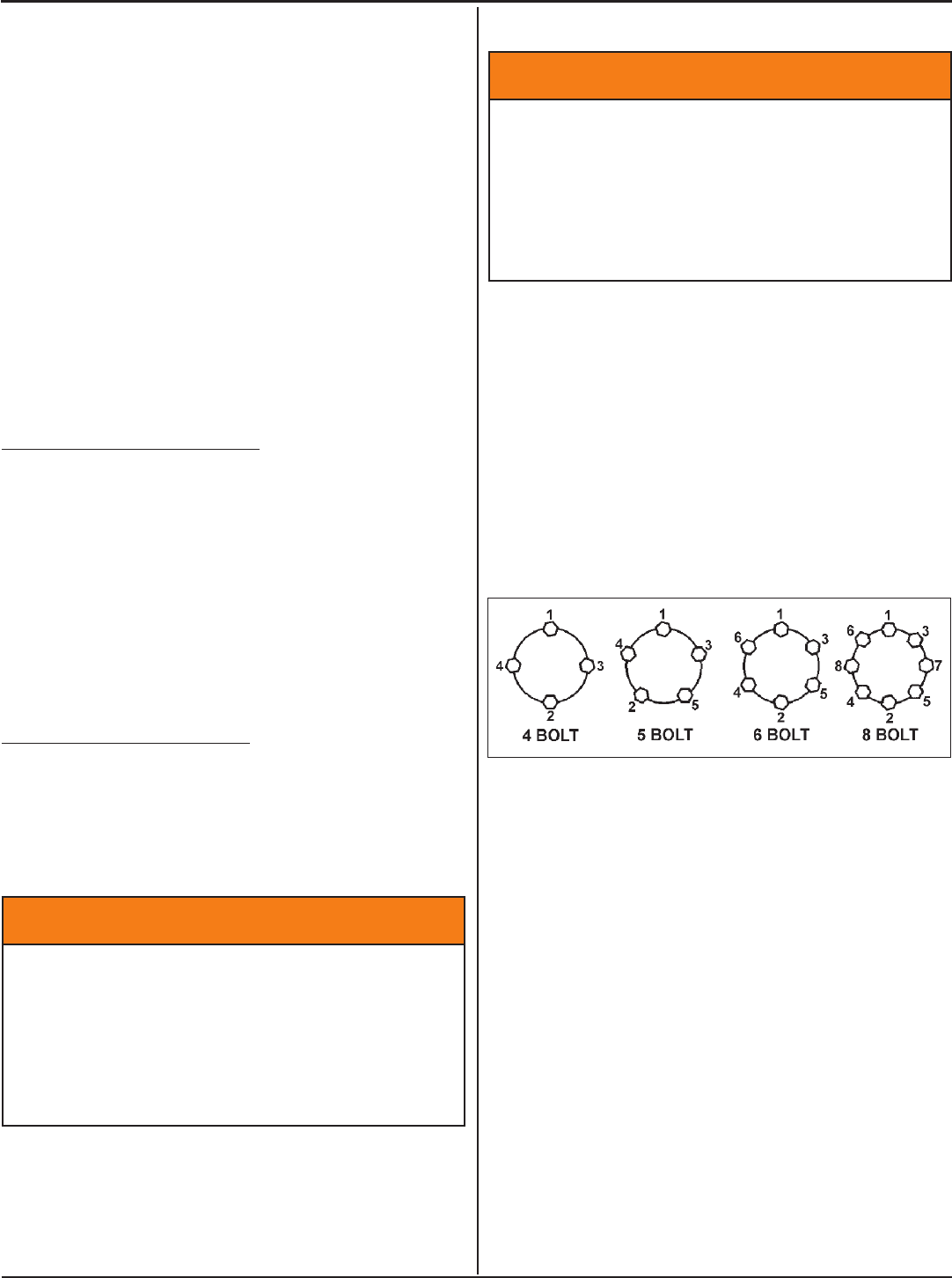Operating Guide

56
dump body is supported by the body prop.
1. Park the trailer on a rm and level surface.
2. Pump grease into the dump body hinge ttings and
rear door hinges every month.
3. Raise the dump body and place the body prop in
the upright position. Lower the dump body onto
the body prop. The body prop must engage the
receiver.
4. Pump grease into the ttings on each end of
the cylinder(s) and in the scissor mechanism (if
equipped). The number of grease ttings and
location on the scissor mechanism will vary by
trailer model.
5. For trailers equipped with fold down sides, pump
grease into each tting on the fold down side hinges
every month.
9.2.11 hydraulIc reSerVoIr
Check uid level prior to towing the trailer. The reservoir
is normally located inside the battery box.
The dump body must be fully lowered before checking
uid level. The reservoir should be lled to the full mark
on the side of the reservoir.
Use a quality hydraulic uid with anti-wear properties,
rust and oxidation inhibitors. Fluid ejecting from the
reservoir could indicate a low battery.
9.2.12 lug nutS or BoltS
Lug nuts or bolts are prone to loosen right after a wheel
is mounted to a hub. When driving on a remounted
wheel, check to see if the lug nuts or bolts are tight
after the rst 10, 25 and 50 miles of driving, and before
each tow thereafter.
^ WARNING
Lug nuts or bolts are prone to loosen after
being rst assembled. Death or serious
injury can result.
Check lug nuts or bolts for tightness on a
new trailer, and after re-mounting a wheel
at 10, 25 and 50 miles.
^ WARNING
Metal creep between the wheel rim and lug
nuts or bolts can cause rim to loosen.
Death or injury can occur if wheel comes
off.
Tighten lug nuts or bolts before each tow.
Tighten the lug nuts or bolts in three stages to the
nal torque for the axle size on your trailer, to prevent
wheels from coming loose. Tighten each lug nut or bolt
in the order shown in the following gure.
Use a calibrated torque wrench to tighten the fasteners.
Verify that wheel studs are free of contaminates such
as paint or grease, which may result in inaccurate
torque readings. Over-tightening will result in breaking
the studs or permanently deforming the mounting stud
holes in the wheels, and will void the axle warranty.
See your axle manufacturers manual or your dealer for
wheel nut or bolt torque specications.
If your ball mount is welded to the shank, adjusting the
ball height and angle can be rather difcult. This is why
using a ‘L’ shaped drop bar shank with holes about
every two inches is handy. The ball is mounted on a
bracket that is bolted to the drop bar and its height is
easily adjusted. The ball angle can also be adjusted
with a spacer on the top of the ball mount between it
and the drop bar and an adjusting nut at the bottom to
hold the mount steady.
Inspection, Service And Maintenance










